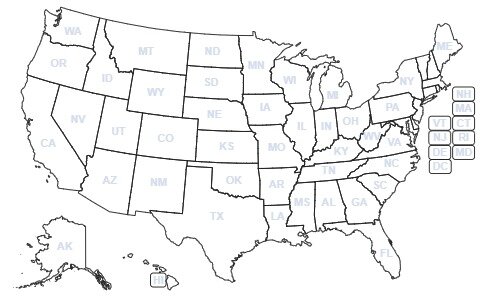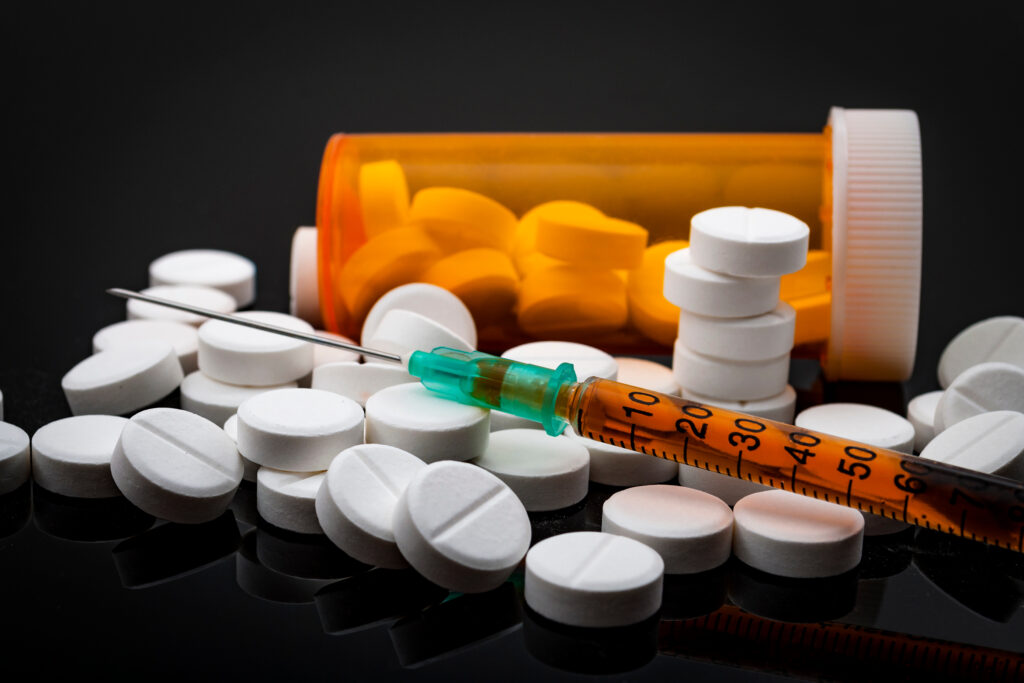Capturing the COVID Booze Wave
Nothing makes one appreciate the little things more than enduring a global pandemic. And right on cue, one of the few bright spots over an otherwise difficult 18+ months has been the wave of COVID-triggered alcohol reforms that has washed over the United States.
News headlines have seemingly splashed across every newspaper and website noting the boom in states allowing previously unheard of things: To-go margaritas along with our takeout meals, beer growlers at our doorstep, and a bottle of wine alongside our weekly grocery delivery.
But despite the widespread attention, there has been no comprehensive effort to quantify just how much COVID has upended American alcohol markets. Also, much of the attention to date has been focused on the temporary emergency orders issued by state governors during the pandemic that green-lighted these new alcohol freedoms, without attempting to fully ascertain which of these changes can be expected to stick around post-COVID.
WHAT COUNTS AS A COVID BOOZE REFORM?
From the outset, it should be noted that trying to compile an exhaustive list of COVID-related booze reforms is no simple task. This is due both to the complex nature of the alcohol distribution itself (broken into many types of licenses that allow different industry stakeholders to engage in different activities) as well as the many different kinds of reforms that COVID triggered. In some states, it was to-go cocktails; in others, it was allowing grocery stores to deliver alcohol alongside food; in yet others, it was authorizing producers (like breweries and distilleries) to delivery directly to customers’ homes.
For the purposes of this effort, we are counting the following as part of the COVID booze wave: Any reform enacted during COVID that authorized to-go or delivery alcohol from a restaurant/bar, off-premise retail store (grocery store, liquor store, etc.), or brewery/distillery, and that will last for two years or more. This means emergency orders that expire at the end of the pandemic are not counted because they are merely temporary. Several states have also extended COVID-related alcohol reforms, but only for a year or so; these also did not qualify. To count as a durable COVID booze reform, it must either be a permanent reform (as most of these are) or one that has been extended via legislation until at least 2023.
A quick note on what the word “delivery” encompasses is also helpful. Some states have passed to-go cocktail laws that merely allow curbside pick-up of drinks from restaurants, not delivery to customers’ homes (these are still counted here since they increase market access for alcohol in a meaningful way compared to the status quo ante). For restaurants, bars, and retail stores, when delivery is involved, the delivery is almost always local delivery via a driver (either an employee of the business or a third-party delivery service). For breweries and distilleries, the form of delivery is often more varied: Either local delivery via a driver or shipments of alcohol made via the mail. We did not include shipments from wineries for these purposes since a vast majority of states have allowed direct-to-consumer wine shipments for several decades (but only a handful allow beer and distilled spirits direct-to-consumer shipments).
As a final note, numerous states previously allowed some types of alcohol delivery—usually from grocery stores—pre-COVID, but would only allow employees of those stores conduct the deliveries, rather than third party delivery services. During COVID, a few states—Louisiana being a prime example—expanded their delivery allowances from retail stores to permit the use of third-party delivery services. Since this was a delivery-enhancing reform that makes delivery more practicable and widely available, it was counted here. (A spreadsheet of the data compiled, along with additional explanatory notes can be found at the end of this post).
QUANTIFYING THE COVID BOOZE WAVE
With these clarifications out of the way, we can proceed to the main event. The results? The COVID booze wave was indeed enormous. All told, 32 out of 50 states have enacted some type of to-go or delivery alcohol reform during COVID. Put simply, almost 65% of American states have implemented—mostly via legislative action, although sometimes regulatorily—a significant overhaul to their alcohol laws in just the past 18 months. The speed and immensity of this alcohol reform wave surely make it one of the most significant policy sea changes in modern American history.

States That Have Enacted Some Type of COVID-Related Alcohol Reform
While 32 states have passed some type of booze reform, it’s worth looking at each of the different types of changes and how they compare to the pre-COVID landscape. The three categories we analyzed, as noted, were to-go/delivery from restaurants/bars (we call these “to-go/delivery cocktail laws”), delivery from off-premise retail stores (grocery stores, liquor stores, etc.), and local-delivery or mail-shipments from breweries/distilleries.
Each of these categories showed substantial movement from pre-COVID to now, with to-go/delivery cocktails being the most spectacular change. The below chart shows the number of states that allowed each category of to-go/delivery type, with red denoting the pre-COVID landscape and blue the present day.
To-Go/Delivery Alcohol: Pre-COVID Versus Now
To-Go/Delivery Cocktails
More than any other category, the explosive rise of to-go/delivery cocktails from restaurants and bars shows just how immensely COVID upended the world of alcohol. In the pre-COVID era, no state had an explicit to-go/delivery cocktail law on the books; as of today, 29 states have either made to-go cocktails permanent or extended them for at least 2 years. (One frequent source of confusion is the commonly-held belief that Louisiana—along with a few other states—already had at least some version of a to-go cocktail law pre-COVID; rather, states like Louisiana do not forbid open containers in public areas, which has allowed municipalities such as New Orleans to develop a thriving go-cup culture for years—other cities, like Indianapolis and Erie, PA also have relaxed open container laws).
Of the states with newly minted to-go/delivery cocktail laws, 20 of the 29 made to-go/delivery cocktails permanent, while the rest extended them anywhere between 2-5 years. To break things down further, 22 of the to-go/delivery laws explicitly authorized delivery in addition to just curbside/takeout cocktails from restaurants; the remaining either only allowed curbside pick-up or did not specify if delivery to a customer’s home was permissible. Finally, 7 of the 29 states explicitly denoted that only employees of the restaurants or bars could conduct deliveries, while the rest allow and contemplate the use of third-party delivery services. That makes the pre-COVID vs. today comparison particularly vivid.

States With To-Go/Delivery Cocktail Laws pre-COVID

States With To-Go/Delivery Cocktail Laws Today
Delivery From Off-Premise Retail Stores
The innovation of getting a bottle of wine, six-pack of beer, or fifth of bourbon in your weekly Instacart order existed in numerous states before COVID. Nonetheless, many other states still forbid this modern day convenience, while even those that do permit it sometimes restrict the use of third-party delivery services (for more on the ins-and-outs of local home delivery from off-premise retailers see here).
COVID made an impact here too, even if not quite as dramatic as to-go/delivery cocktails (since more states allowed alcohol delivery from retail stores to begin with before COVID hit). All told, 7 additional states passed laws permitting alcohol to be delivered from off-premise retail stores like grocery or liquor stores, while 3 more states expanded already-existing delivery laws to include delivery by third-party services.

It’s important to note that the type of retailer can really matter in this category. For instance, Arkansas passed legislation that authorized alcohol delivery from liquor stores but not from grocery stores. So just because your state is included in the “yes” category does not automatically mean that every store that sells alcohol within the state will be able to deliver it to your door.
Additionally, as noted, many states only allow employees of a retail store to conduct the deliveries, rather than third-party delivery services. This makes it infeasible and impracticable for many stores to conduct deliveries even if they are technically permitted to under state law. Many stores do not have the requisite number of staff to conduct deliveries or the resources to build out an in-house delivery service. Allowing third-party delivery services to operate therefore makes delivery more available and widespread.
Delivery From Breweries and Distilleries
Direct delivery from producers of alcohol to consumers is the most nuanced and tricky category to track. This is because both the type of delivery can vary (local delivery via driver vs. shipping via the mail) as well as the type of alcoholic beverage being delivered (wine vs. beer vs. distilled spirits). A further nuance are deliveries that travel across state lines (i.e., interstate) versus those that stay within the borders of a single state (i.e., intrastate).
Intrastate delivery or shipment of alcohol is fairly straightforward in that a single state can simply pass a law to allow intrastate deliveries or shipments within its borders. In contrast, interstate delivery or shipment raises a whole host of legal and even constitutional issues and requires the cooperation of multiple states (e.g., if one state allows interstate alcohol shipments, those shipments still usually cannot go to another state unless that state also allows interstate shipments via some form of reciprocal law or agreement—for more on interstate vs. intrastate see here).
As pointed out above, interstate (and intrastate) winery shipping laws are now quite common in the United States and have been for several decades. Even at the beginning of COVID, over 40 states allowed wine shipping in some form. In contrast, very few states allow beer and distilled spirits to be shipped via the mail and few also allow local delivery of alcohol via a vehicle from a brewery/distillery to a customer’s house.
Therefore, to track COVID’s impact on producer-to-consumer delivery, we cast a broad net to include any type of law that allowed brewers/distillers to either ship or locally deliver their products directly to consumers. This included everything from Kentucky’s landmark interstate shipping overhaul passed during COVID to New Mexico’s to-go/delivery law that also allowed breweries/wineries/distilleries to serve drinks to-go or for delivery alongside restaurants/bars.
Therefore, while numerous states passed some type of producer-to-consumer delivery reform, few states have comprehensively overhauled their producer-to-consumer laws to include interstate and intrastate shipping of all beverage types plus local vehicle delivery of all beverage types. In other words, when it comes to producer-to-consumer delivery reforms, there’s a long way to go before we reach a truly unshackled delivery/shipping marketplace. Nonetheless, COVID still made an impact in this nuanced, complicated corner of the alcohol world.

These reforms fell into several different camps. By far the most common was the states that, in the midst of passing to-go/delivery reforms for bars and restaurants, also allowed breweries and distilleries to be included in those reforms. The states that did this included: Alabama, Arkansas, Colorado, Connecticut, Michigan, New Mexico, Ohio, West Virginia, and Wyoming.
Kentucky passed its aforementioned landmark interstate shipment law, which allowed distilleries and breweries (and wineries) to ship or deliver to consumers both intrastate and interstate (so long as another state has a reciprocal system in place). New Hampshire passed a bill that allows small breweries and distilleries (and wineries) to ship via common carrier (such as FedEx) inside the state.
Two states, Oregon and Virginia, made permanent regulatory tweaks rather than pass legislation. Oregon’s reform amended its rules to allow distilleries that apply as “distillery retail outlet agents” to deliver to consumers, while Virginia permanently allowed breweries and distilleries (and wineries) to deliver locally via a vehicle to consumers (during COVID Virginia also allowed intrastate shipping via the mail from distilleries but has only been done so temporarily so far).
THE (BOOZY) NEW NORMAL
So where does this leave us? It leaves us staring down the barrel of an ongoing and immense COVID-triggered alcohol reform wave. A healthy majority of states have passed to-go/delivery cocktail reforms during COVID and a good number of states have also taken the opportunity to expand delivery options for retail stores and breweries/distilleries.
Expanding the ways in which alcohol can be sold and delivered to consumers is a good policy idea that is long overdue in America. We’ve previously explained why at great length, so check it out if you’re interested.
While legislative action usually peters out some in the summer and fall months, spring 2022 promises to be another big legislative season for alcohol. States will continue to consider pro-delivery reforms, and it’s likely that this wave will only continue to grow bigger.
How big is anyone’s guess, but one thing is clear: We’ve definitively entered a “new normal” for how Americans buy and access alcohol. Among other things, COVID will be remembered as a once-in-a-century shakeup for American alcohol markets. And since Prohibition started just over 100 years ago, it was about time.
R Street Institute’s Chung Yi contributed to the research for this project
Research Addendum
As noted several times, tracking and analyzing alcohol reform efforts across all 50 states is an effort inherently fraught with uncertainty. After months of seeming inaction, legislative changes can happen suddenly and unexpectedly—and often attract little attention, particularly in an era of hollowed-out local media coverage. Further, legislation is often written in unclear and ambiguous terms, adding yet more uncertainty to the process.
We therefore decided that, in the interest of accessibility and as a public service, it would be worthwhile to include the underlying data we compiled and publish that as well. That way, industry stakeholders and even the public at large can take a deeper dive into this topic and flag new developments as they happen (if you flag them for us, we can make tweaks and updates to what we’ve posted here).
The following spreadsheet therefore includes the summary of our findings, as well as specific bill numbers (and annotations) for each COVID-era alcohol reform we tracked and analyzed. So feel free to dive in!







